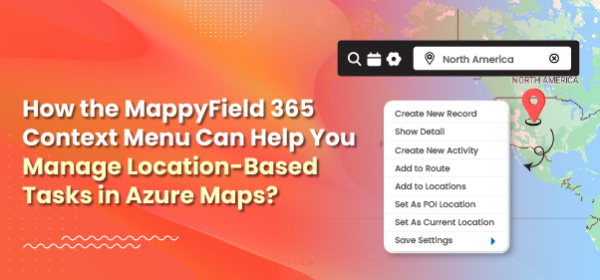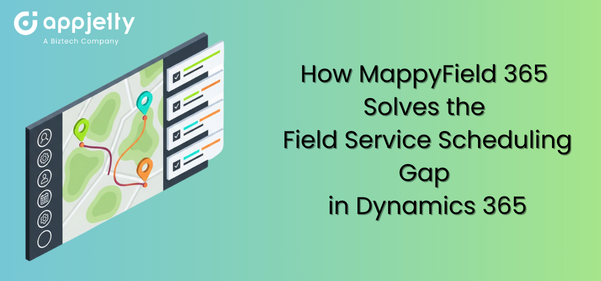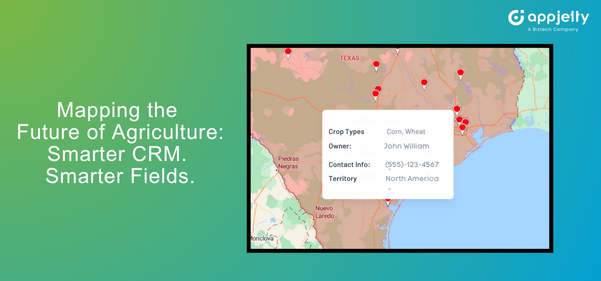As an area manager or sales manager of any reputed organization, you can manage and track activities like sales, services, product dispatch, transportation, and more. MappyField 365 lets you easily track all these activities and manage entity records directly from the map interface.
The context menu in MappyField 365 allows you to perform actions based on a selected location on the map itself, eliminating the need to navigate to a specific configuration each time. You can simply right-click on the map to execute actions for specific locations or plotted records and configure default settings for MappyField 365.
Quick-action options and menus come in handy when you need to update ongoing processes. MappyField 365 provides these quick actions to help you manage your team’s activities and share updates promptly. The context menu is one such feature—a pop-up menu that offers shortcuts for performing various actions directly from the MappyField 365 map. When you right-click on a specific geography, a contextual menu appears, enabling you to execute quick actions and manage location-based activities efficiently.
In this blog, you will learn how the context menu of the MappyField 365 map can help you perform quick actions and manage location-based activities directly from the map.
Step 1: Navigate to MappyField 365 Select “MappyField 365” from the Dynamics 365 dashboard or the app list in the header.
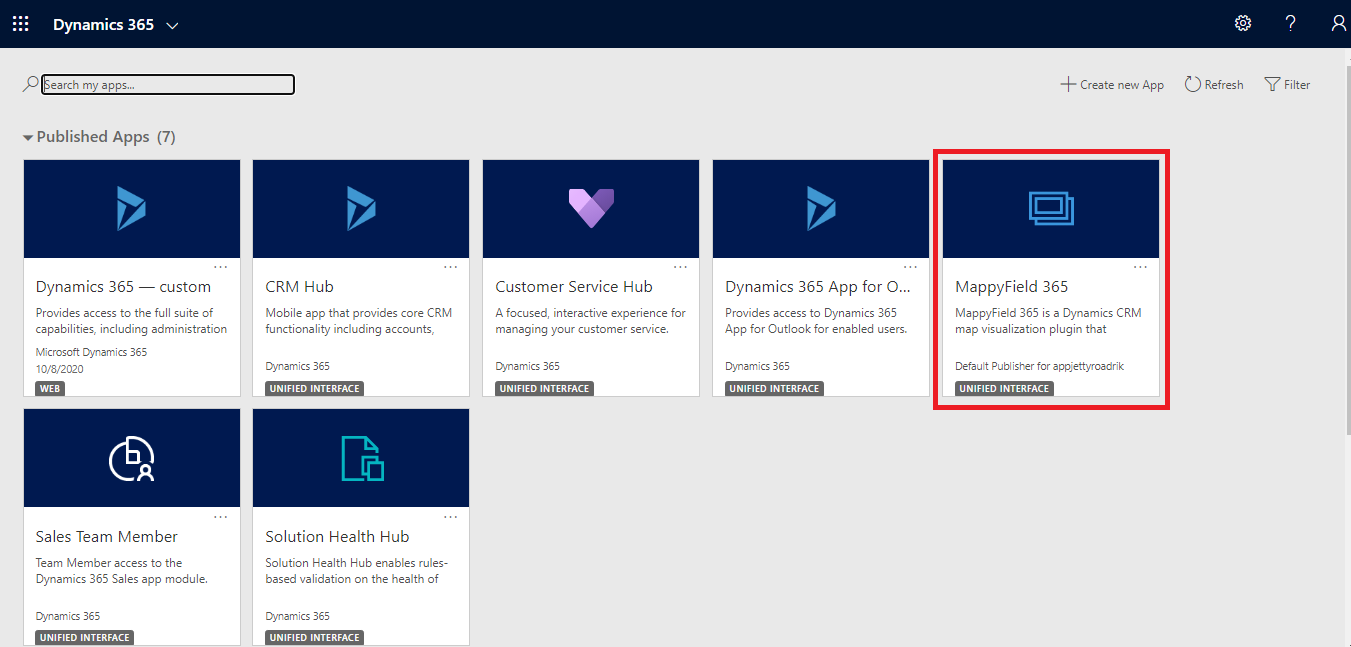
By clicking on MappyField 365, you will navigate to the map of MappyField 365.
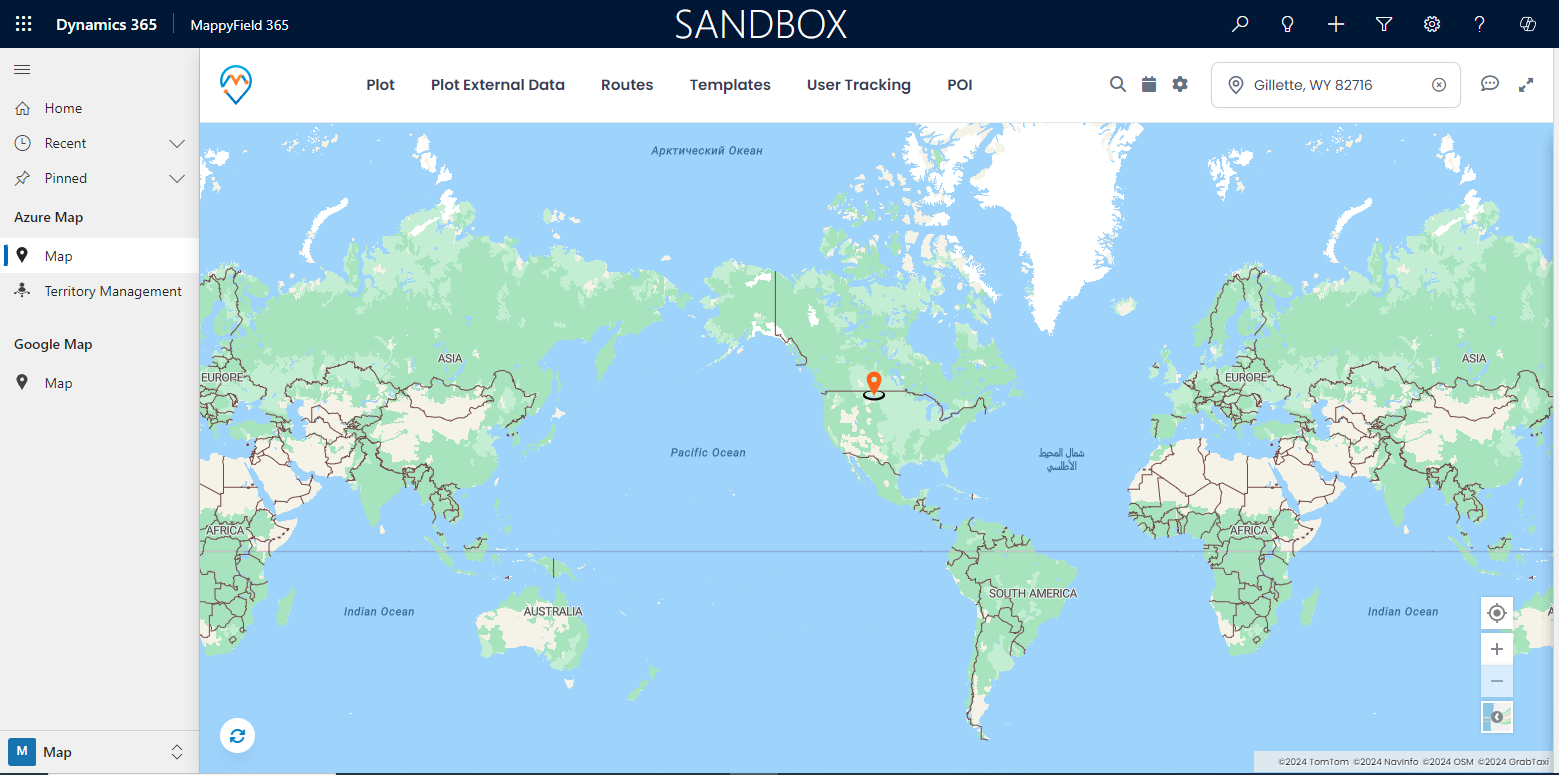
Step 2: Quick Action options from the Context menu
‘Right-click’ on the map at the specific geolocation where you need to perform this action. It will open a “Contextual Menu” with the following options:
> Create New Record > Add to Route > Add to Locations > Set as POI Location > Set as Current Location.
Set default settings by hovering over the ‘Save Settings’ option: > Default Location > Map Zoom Level > Origin > Destination.
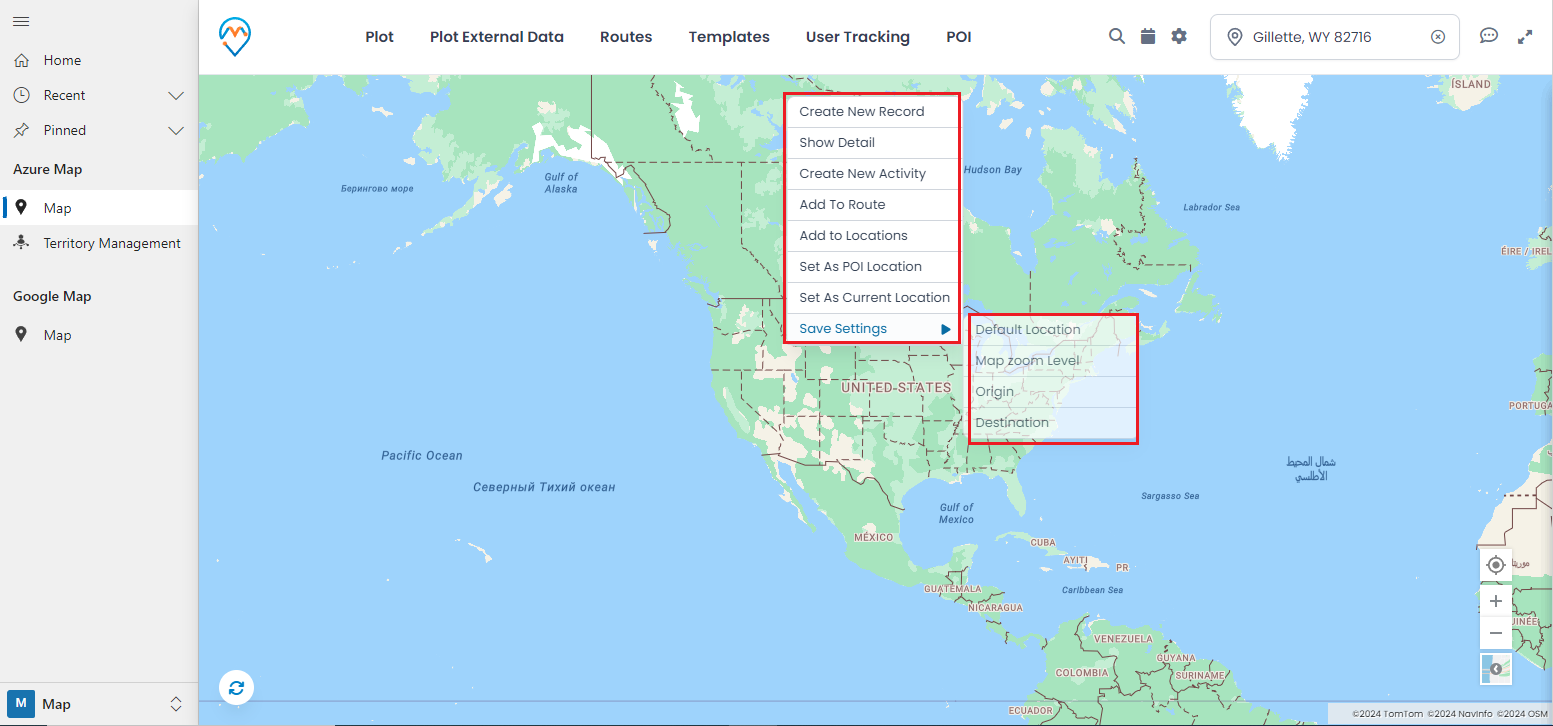
Now, let’s understand the options of the ‘Context Menu’ individually:
Create New Record:
If you find a lead or a new client, you don’t need to navigate to an individual entity to create a record for it. You can create a new record for any location directly from the map by right-clicking on the specific geolocation. This will display a context menu, where you can click on “Create New Record.” A popup will open, allowing you to add any entity record (for Account, Contact, or Lead).
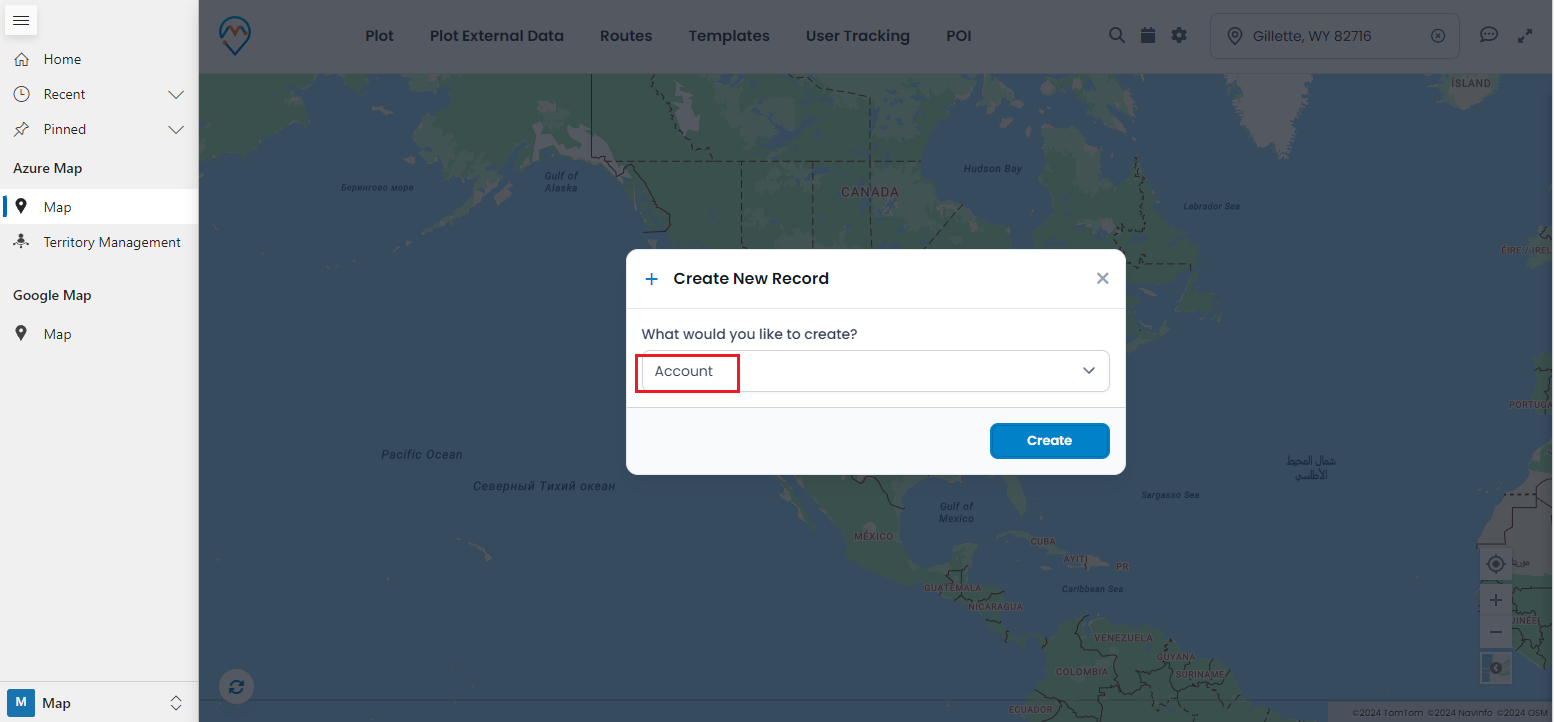
Once an entity is selected, click on the Create button, which will open the CRM form in a new tab for creating a record.
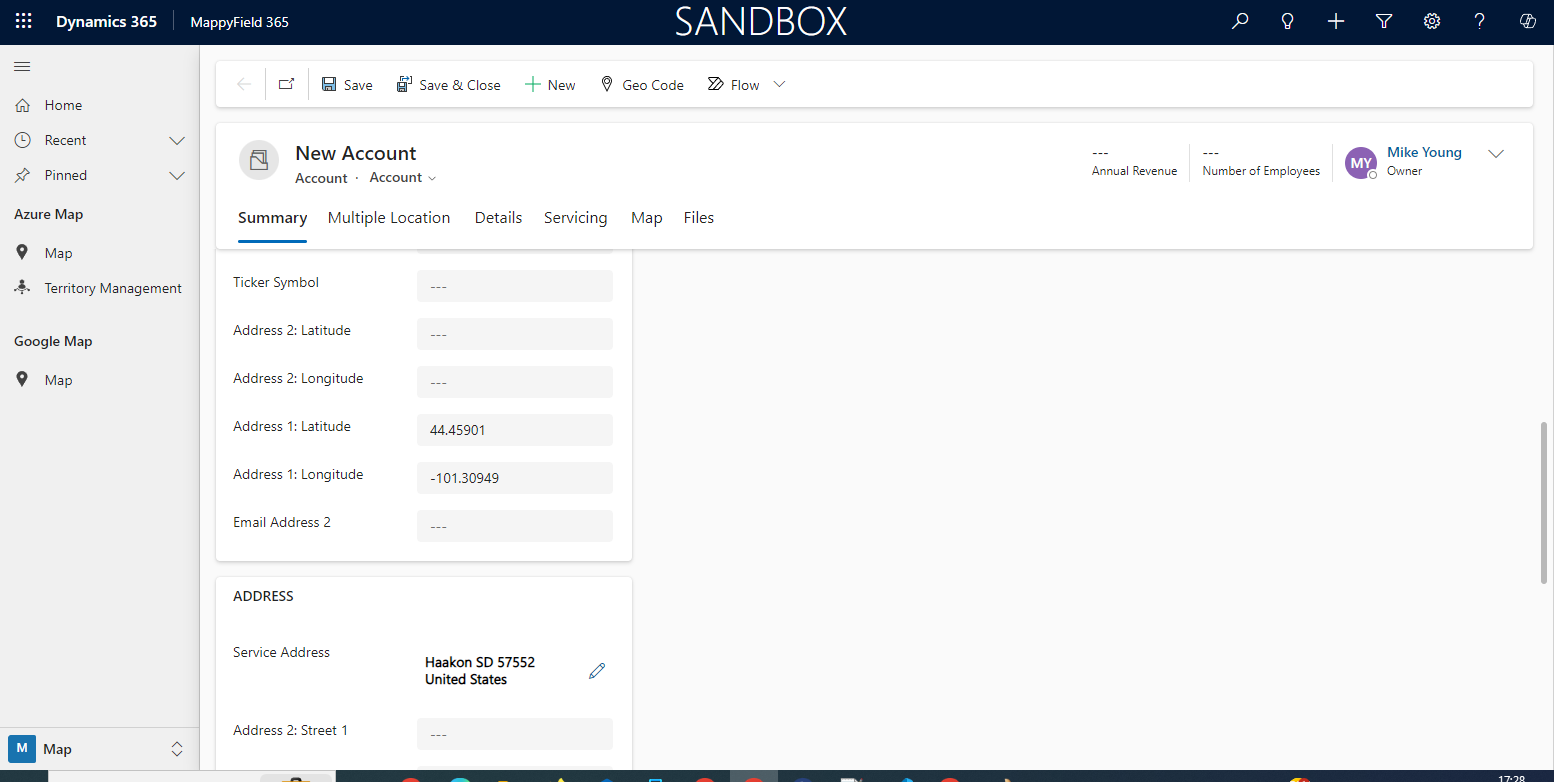
It will pre-configure the address for that record. Your selected location will be auto-filled in the entity details. Later on, you can save, edit, and update the details.
Add To Route:
It will add the selected location as a route on the map. This quick option in the context menu is useful if you have already plotted records on the map and want to create a route.
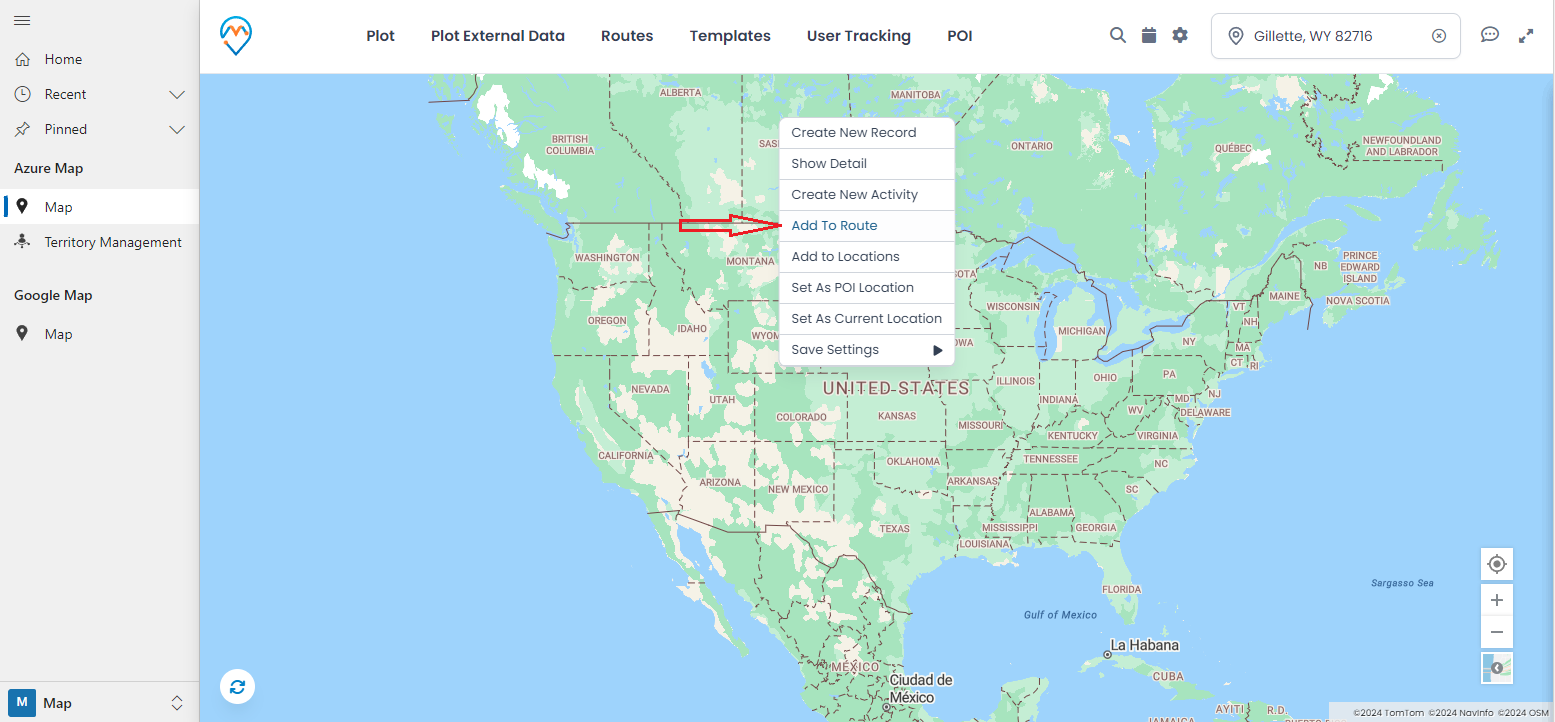
By clicking on “Add To Route,” the right-clicked location will be added to the Route. This allows you to visit that location as part of your Route.
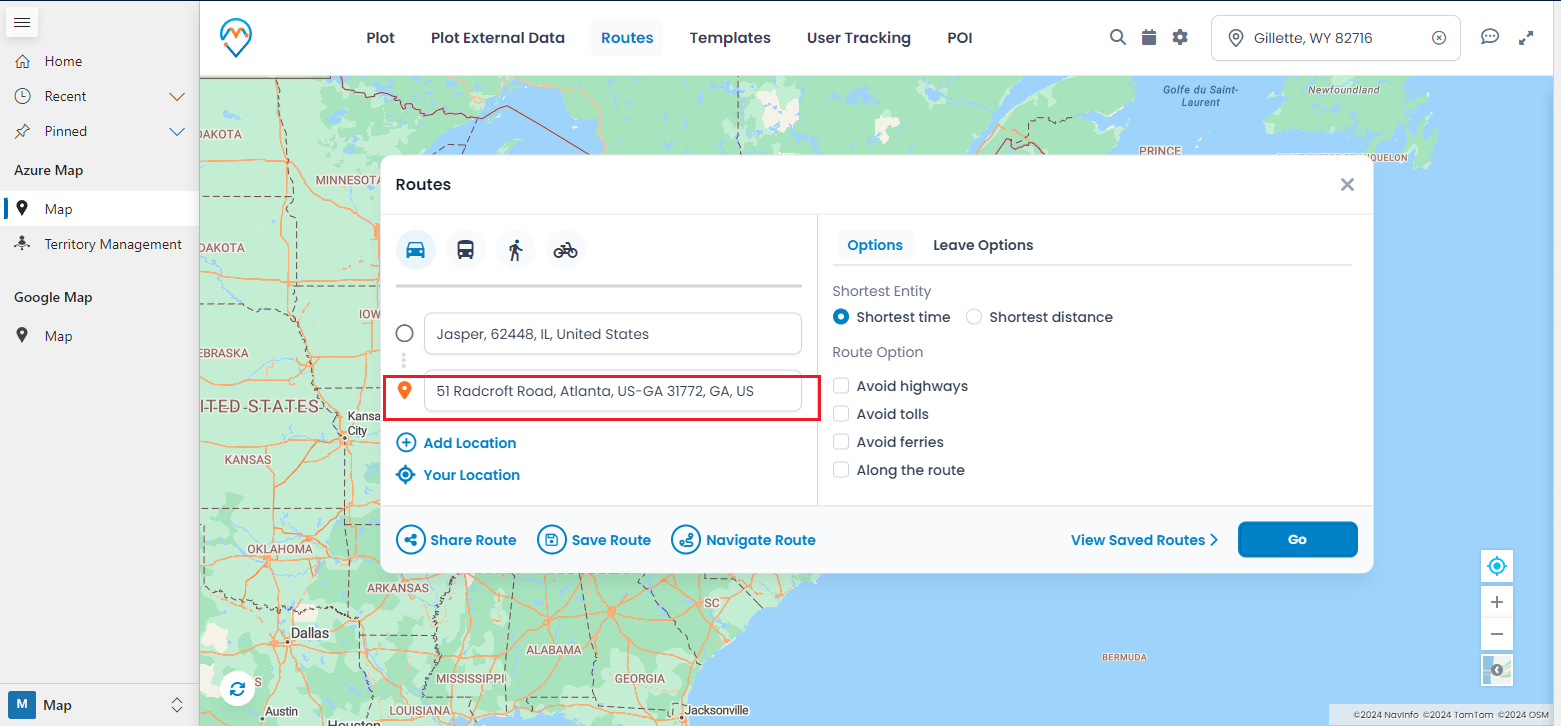
From the context menu, it will be easy to add a specific location to your routes for any sales or service visits.
Set As POI Location:
It will add your selected location as a POI Location.
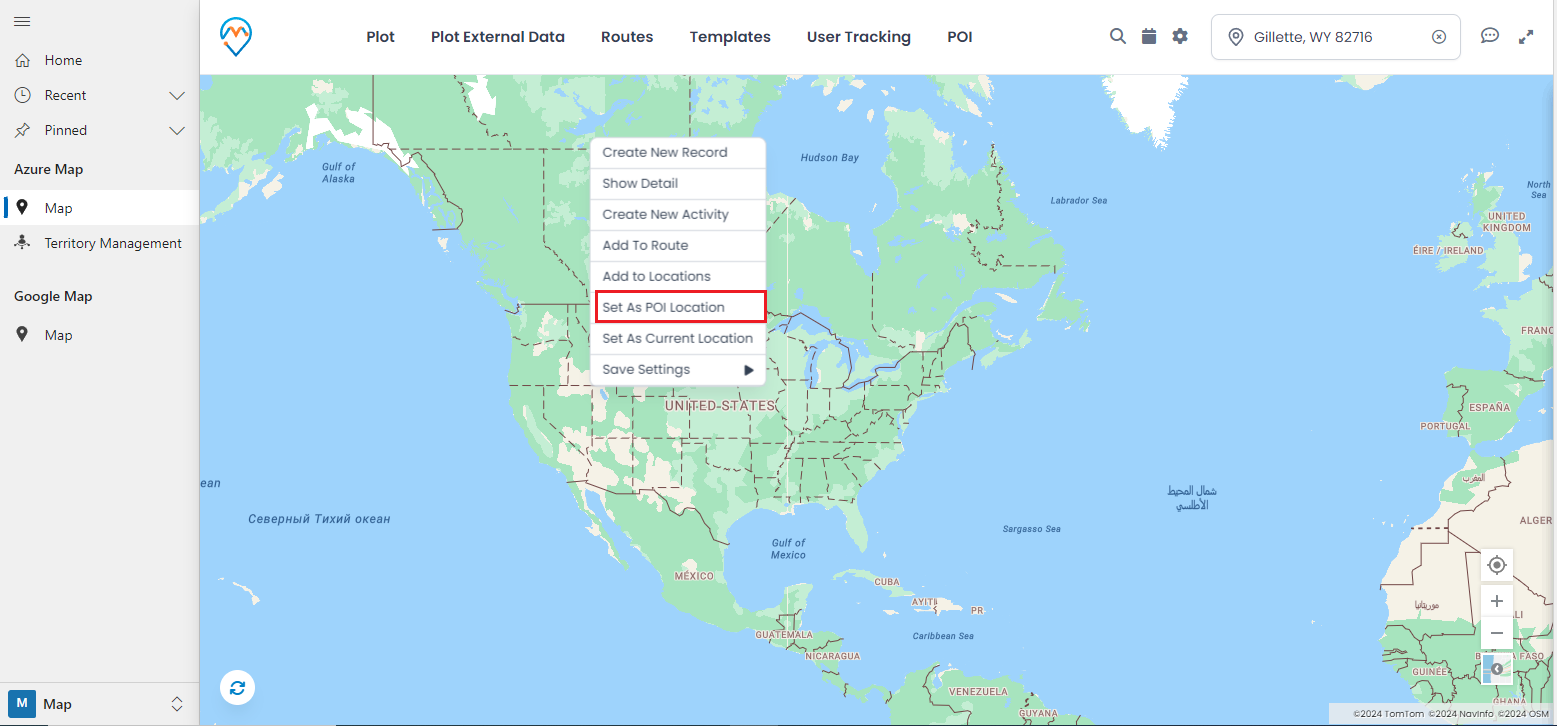
If the sales reps plan to visit the client’s location for sales or service, they can search for the POI based on the specific location or area.
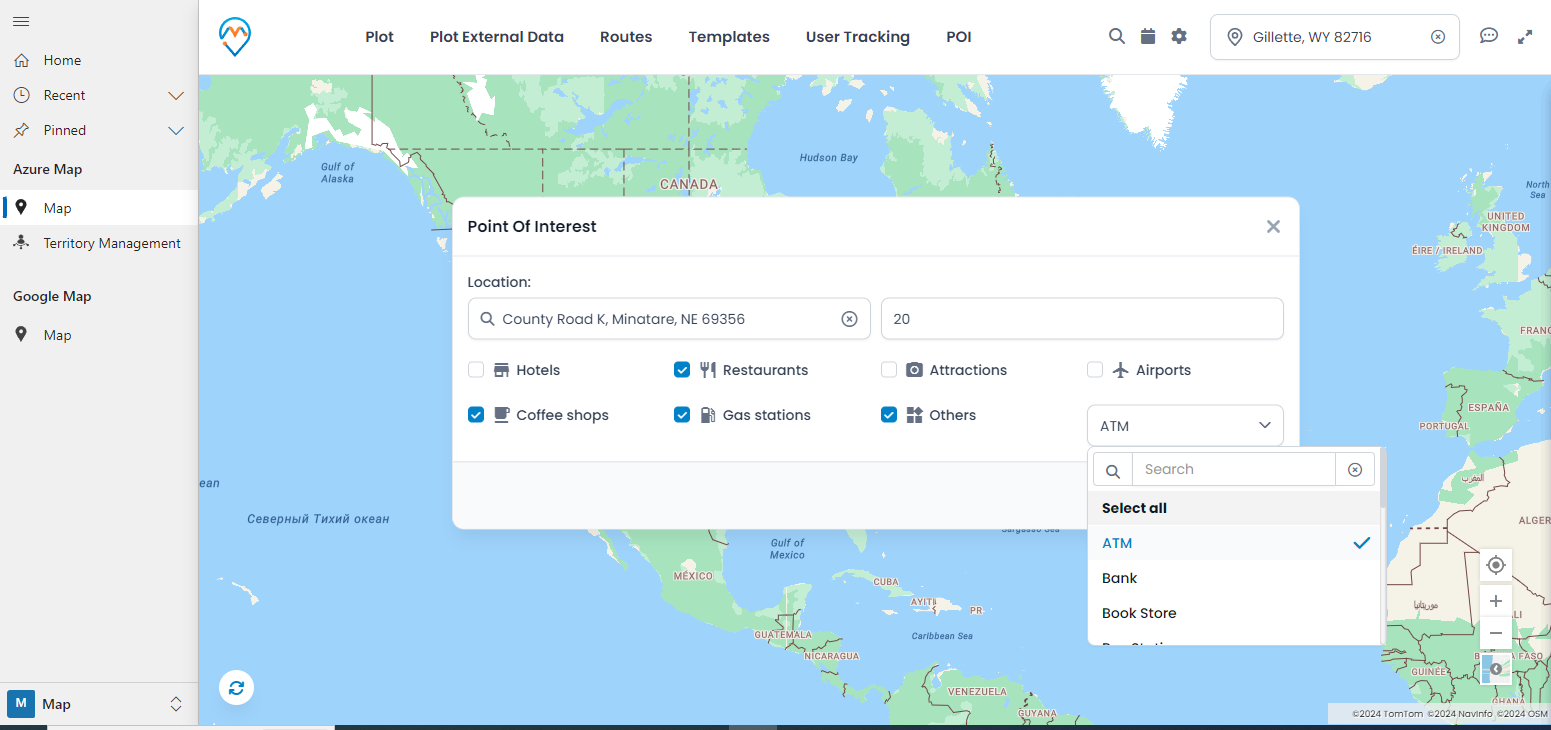
Based on the selection of the location, the sales representatives will receive the POI location nearest to the selected location.
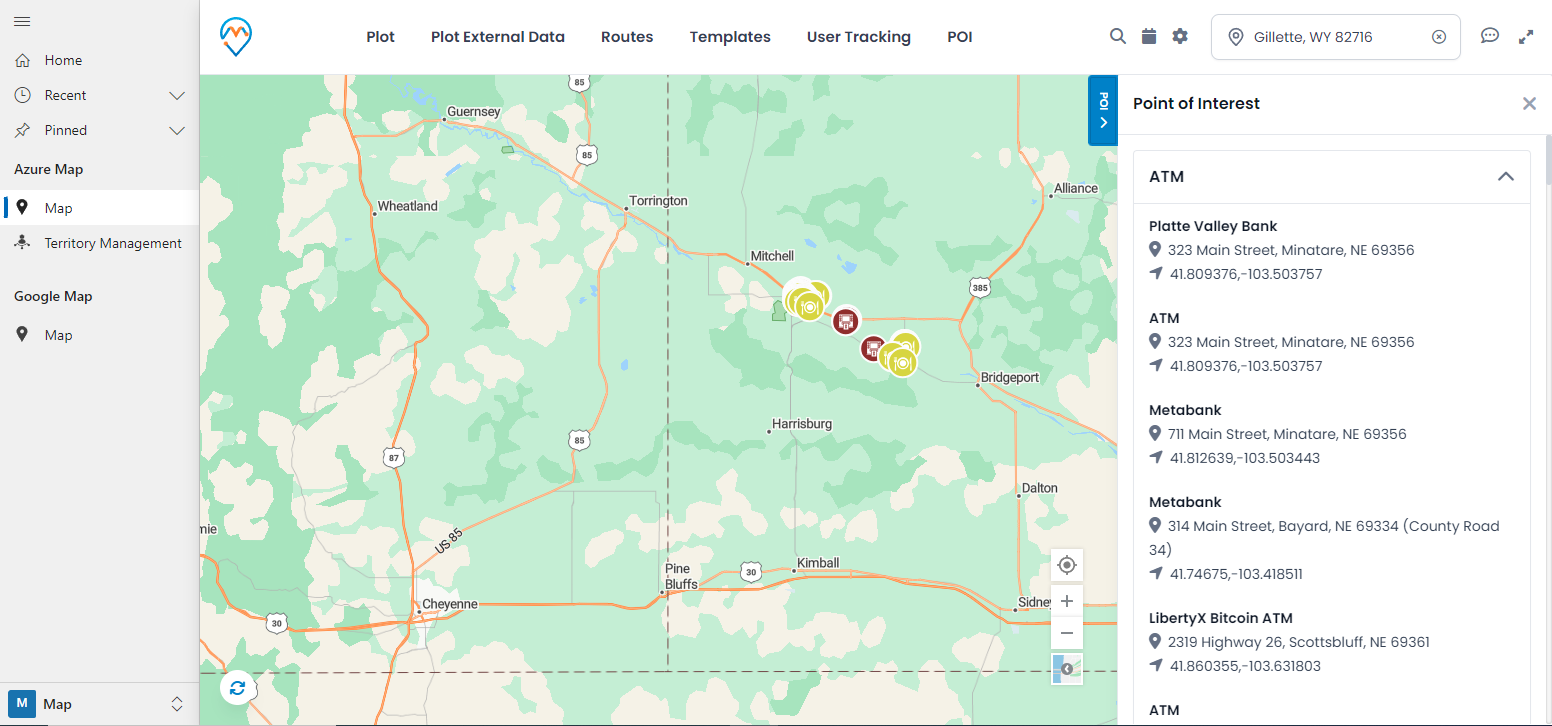
You can change the current location simply by right-clicking on the specific location on the map itself.
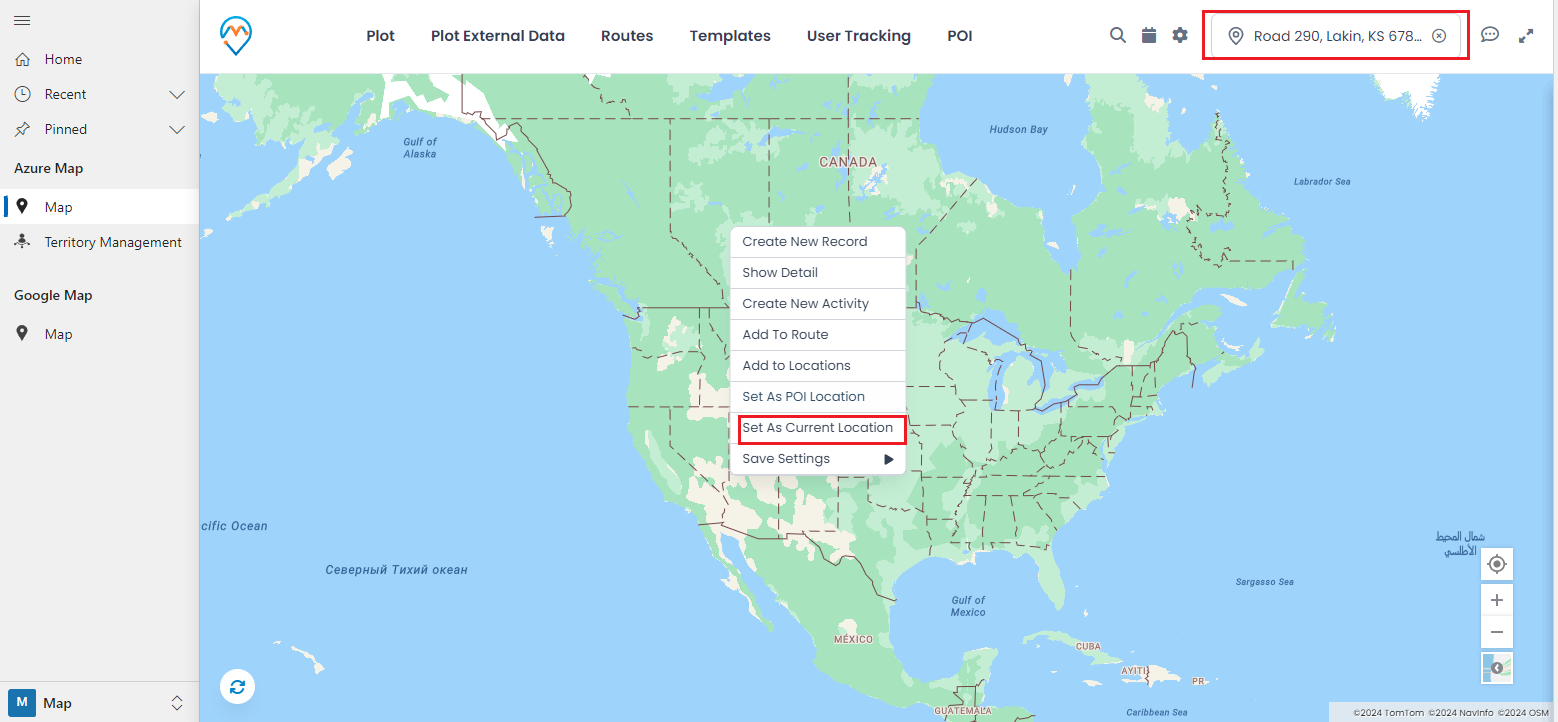
By clicking on “Set As Current Location” from the context menu, the selected location will be set as the current location, and the address will also be updated.
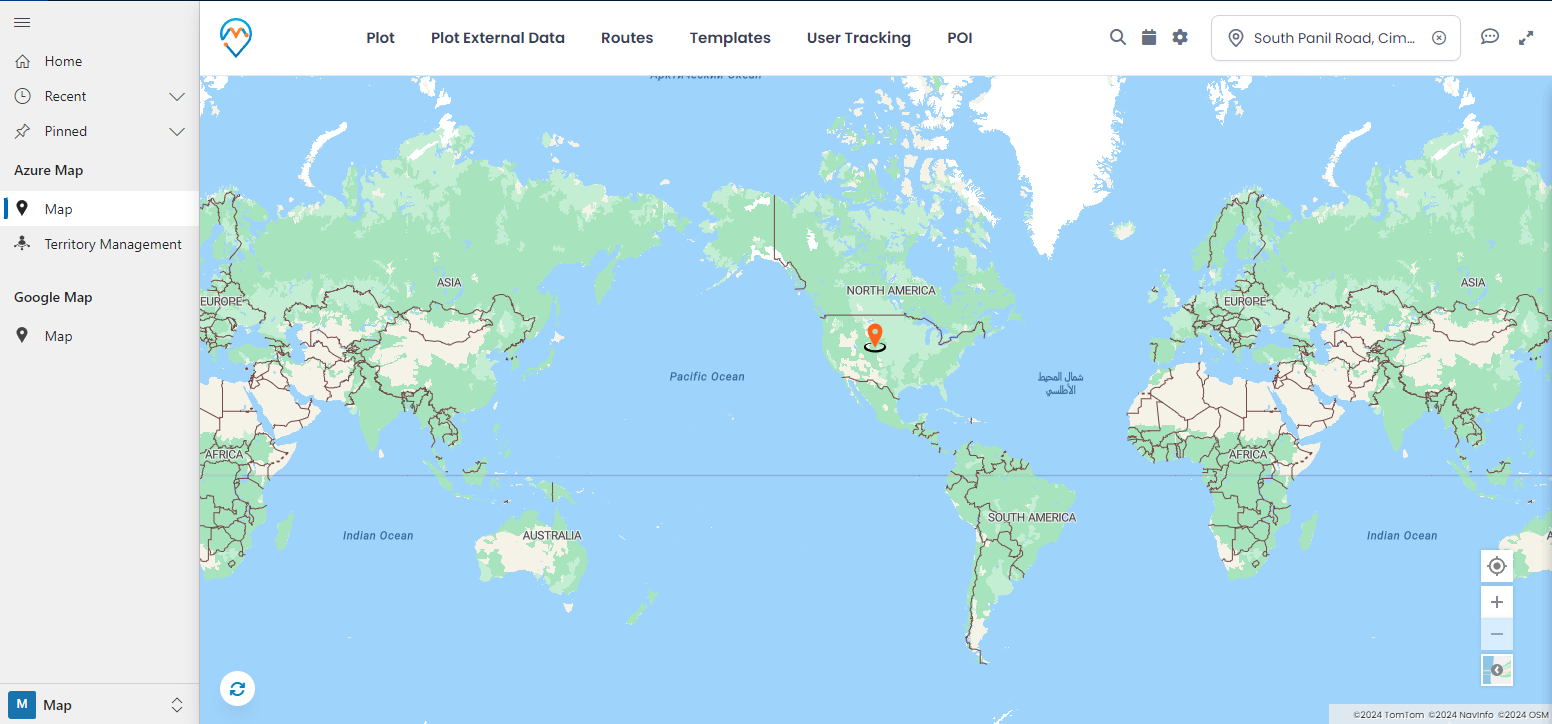
Based on the current location, you can perform many actions, such as proximity searches, finding points of interest (POIs), etc.
Save Settings:
You can directly save some of your settings from the map without needing to navigate to a specific configuration. This can be done through the context menu.
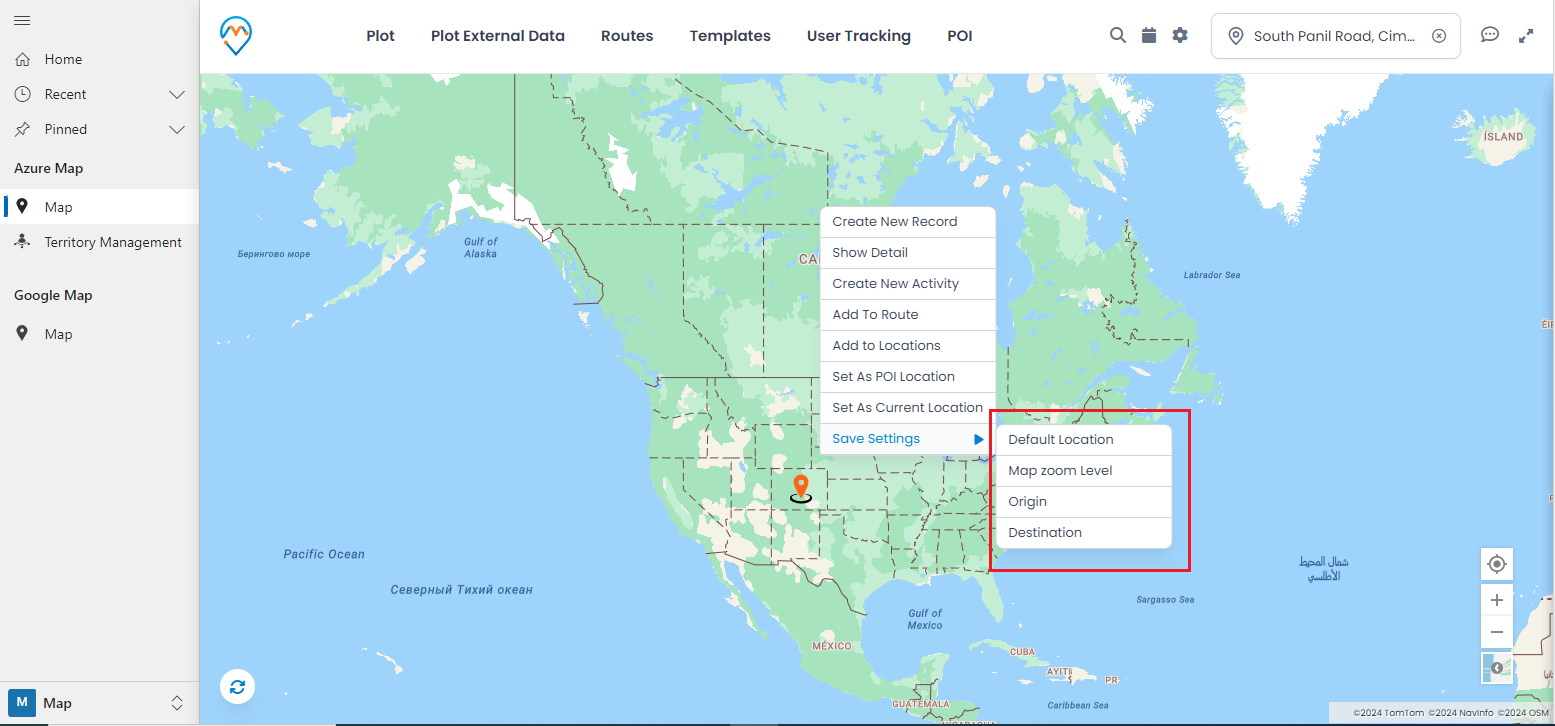
Default Location: This will set the selected location as the default location on the map.
Map Zoom Level: This will set the map’s default zoom level when loaded.
Origin: This will set the default origin of the selected location.
Destination: This will set the default destination of the selected location.
As a result, sales managers (or admin users) will not need to navigate to the specific CRM menu to add records each time, as they can perform quick actions using the context menu of MappyField 365.
All product and company names are trademarks™, registered® or copyright© trademarks of their respective holders. Use of them does not imply any affiliation with or endorsement by them.


